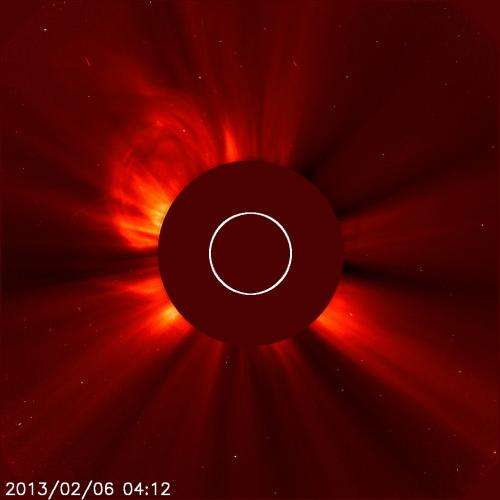Sun produces two CMEs

In the evening of Feb. 5, 2013, the sun erupted with two coronal mass ejections or CMEs that may glance near-Earth space. Experimental NASA research models, based on observations from the Solar Terrestrial Relations Observatory (STEREO) and ESA/NASA's Solar and Heliospheric Observatory, show that the first CME began at 7 p.m. EST and left the sun at speeds of around 750 miles per second. The second CME began at 10:36 p.m. EST and left the sun at speeds of around 350 miles per second. Historically, CMEs of this speed and direction have been benign.
Not to be confused with a solar flare, a CME is a solar phenomenon that can send solar particles into space and reach Earth one to three days later.
Earth-directed CMEs can cause a space weather phenomenon called a geomagnetic storm, which occurs when they connect with the outside of the Earth's magnetic envelope, the magnetosphere, for an extended period of time. In the past, CMEs at this strength have had little effect. They may cause auroras near the poles but are unlikely to disrupt electrical systems on Earth or interfere with GPS or satellite-based communications systems.
Provided by NASA's Goddard Space Flight Center





















